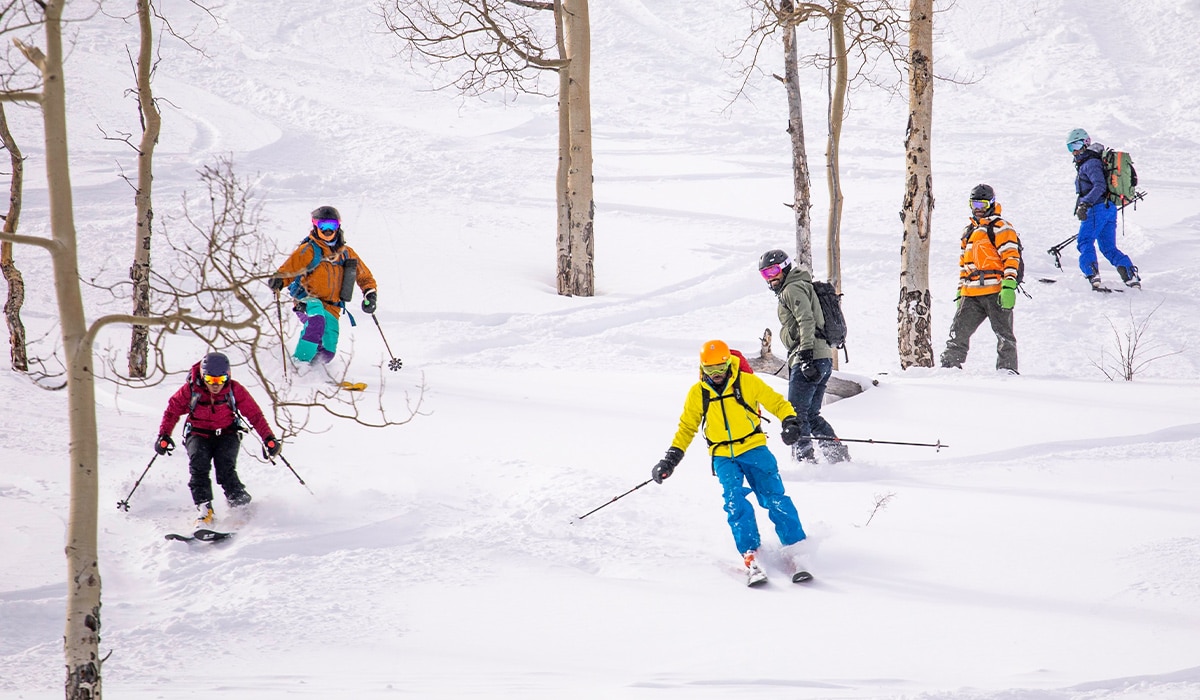How To Find Low Angle Terrain For Backcountry Skiing
Whether the avalanche danger is high, you’re getting into backcountry skiing, or just getting older, backcountry touring on low angle slopes can be a glorious way to spend the day.
Why Find Low Angle Terrain?
Whether the avalanche danger is high, you’re getting into backcountry skiing, or just getting older, backcountry touring on low angle slopes can be a glorious way to spend the day. You can harvest powder stashes in relative safety, with a pup or group of friends by your side, all the while taking in the majesty of your surroundings.
Using onX Backcountry’s portfolio of tools like Slope Angle, Avalanche Forecasts, and Weather you can determine the aggressiveness of your day within one easy-to-use planning tool. The holy grail of a low angle day is to keep yourself on slopes that range from 10 degrees to no more than 25 while staying out of any runout zones of slopes greater than that range. You can do this in a variety of ways. The first option is to toggle on Slope Angle in onX Backcountry Premium or Elite, which shades slopes based on their steepness. Stay in the green here. Additionally, you can use a Topo Basemap to avoid terrain with drainages, cliffs, and other terrain traps. The tighter the contour lines, the steeper the terrain and conversely, the more spaced out, the more mellow the slope will be.
Low Angle Guidebook
For those residing in the Centennial State, check out Lou Dawson’s book, “Light Tours of Colorado.” Dawson was the first person to ski all 54 of Colorado’s 14,000 foot peaks, pioneered WildSnow.com, which has developed a cult-like following, is a member of Colorado’s Ski and Snowboard Hall of Fame, and is an author for onX partner Beacon Guidebooks. The Roaring Fork Valley has been his home base since the age of 12 and has been the launchpad for his alpine exploits. His younger years were filled with couloirs, steep skiing, and high-consequence zones, but as he’s “aged in” to his skiing, he’s grown to appreciate easy ski tours.
The “Light Tours of Colorado” Guidebook is has been added to the onX Backcountry App. Discover low angle tours across the state of Colorado with onX Backcountry.
What Is Considered Low Angle?
For Dawson, a light ski tour is something that is shorter in length, gradual in slope, and allows for some novice to intermediate skiing. While slope angle is imperative to finding low avalanche danger slopes, the skiing also has to be half-decent. This means making sure the trees are appropriately spaced for turns, hazards like rocks are minimal, and the route is generally easy to follow. The ethos of this book is to avoid spending the whole day evaluating the slopes. Paired with an Avy-1 class and what Dawson calls “avalanche eyes,” you can mostly run and gun these routes.
The Gear
While most of these zones avoid any significant avalanche danger, it’s important to still carry your beacon, shovel, and probe. These serve a two-fold purpose. The first is that it’s a social contract with other groups out in the backcountry who may be skiing in avalanche terrain. You’ll want to be able to assist in a rescue if duty calls. The second, as Dawson puts it, “packing those items in the morning puts you in the mindset,” meaning that you’re preparing for a day where anything can happen. Being active and ready can make the difference in a rescue scenario. Consider these items your everyday carry in the backcountry along with phone, wallet, keys.

Refine The Skill
Over the years, Dawson and his touring partners have honed their “avalanche eyes,” which is essentially determining which slopes will slide and others that won’t while moving through terrain. Using tools like onX Backcountry or an inclinometer, you can test yourself throughout the day. Guess the slope and then check against the actual slope angle.
While having a tool like a guidebook or onX Backcountry is great, it doesn’t remove the need for prudent decision-making. It’s important before embarking on a day in the backcountry to check in on your party’s acceptable level of risk. If that threshold varies within the group, it’s best to discover that before you’re staring down a line. Dawson shares, “the thought I’d leave people with is to know your acceptable risk level, and understand your partners’ as well.”
While there’s no supplement to just spending time in the mountains, it’s important to do so in an educated manner. This means starting out with manageable terrain, finding mentors who have more experience than you, and taking avalanche courses.